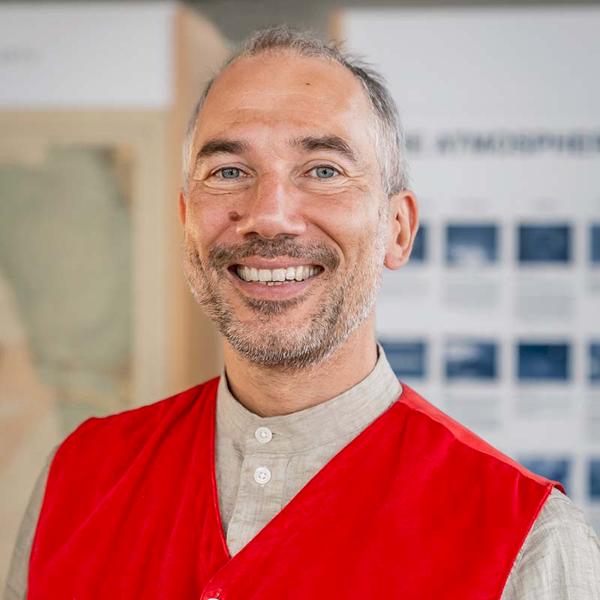Celebrating Pride with Andrea Bandelli
Feature Story
By Leah Kist and Olivia Hamilton
Last update June 25, 2024

Andrea Bandelli is chairman and managing director of Woven Foundation for Creative Climate Communication and an international consultant and adviser in the field of science communication and public engagement with science. In a career spanning over 25 years, Bandelli has worked for several public and private organizations, including science museums, government organizations, and universities across Europe, the U.S., South Africa, and Brazil, leading innovative projects on science, art, democracy, and public participation. He has also published two books and several academic and popular articles on public engagement with science and technology, including a piece in the book Queering Science Communication: Representations, Theory, and Practice.
Bandelli has also been a part of the National Academies’ Eric and Wendy Schmidt Awards for Excellence in Science Communications selection committee for the past three years. These awards honor exceptional science communicators, science journalists, and research scientists who have developed creative, original work to communicate issues and advances in science, engineering, or medicine for the general public.
In celebration of Pride Month this year, we asked Bandelli about his experiences with including LGBTQIA+ perspectives in science communication.
How did you begin communicating about queer perspectives in science communication?
Bandelli: The catalyst was in 2016/2017 when, with a group of colleagues, we decided to launch the International Day of LGBTQIA+ People in STEM. We realized that queer people who want to have a career in STEM face structural disadvantages and barriers, and we set out to change the status quo through international collaboration and visibility.
As a contributor to Queering Science Communication, what motivated you to write about your experiences working in an organization with a high percentage of LGBTQIA+ individuals?
Bandelli: I wanted to share my experience at Science Gallery International as a case study of the impact of queer perspectives on the management and governance of an international network. With my colleague Sarah Durcan, we reflected on how our particular queer setup allowed our organization to become comfortable with issues of diversity, cultural differences, and intergenerational collaborations.
What advice would you give to others looking to integrate LGBTQIA+ perspectives into their science communication?
Bandelli: Being able to be visible as LGBTQIA+ is paramount. If you run an organization, make it possible for LGBTQIA+ people to be visible at all levels within the organization; if that’s not (yet) the case, seek for allies, colleagues, and friends who can help make this important step.
Looking ahead, what role do you envision queer perspectives playing in shaping the future of science communication theory, practice, and research?
Bandelli: It’s very important to look at queer perspectives as a value for everyone, and not only to strengthen inclusion of queer communities. Queer people bring creativity, innovation, and a depth of understanding of the importance of science communication at personal and institutional levels that often goes way beyond more established and widespread practices.
In the book Queering Science Communication: Representations, Theory, and Practice, Andrea Bandelli and Sarah Durcan discuss how LGBTQIA+ representation in organizational leadership impacts overall inclusivity and visibility. They write:
Recognizing that science and technology are too often exclusionary or diminishing of LGBTQIA+ people and experience, it is vital ... to model and promote inclusive and LGBTQIA+ visible science communication. We do this so that more diverse people can see themselves and be themselves in the expanding possibilities of art and science, through working with universities to help them shift their approach to education and public engagement.
We act in a ‘queer way’ by challenging traditional establishments (universities), prioritizing certain activities (well-being, mutual respect, and so on), and embracing unconventional ways of working that value the individual, not the system.




